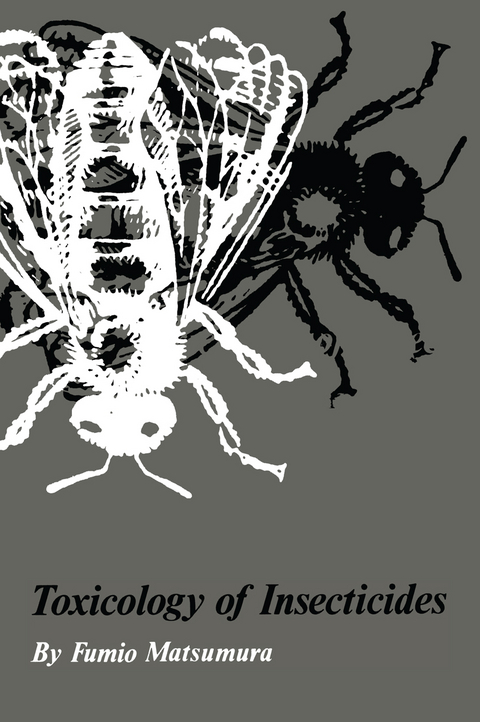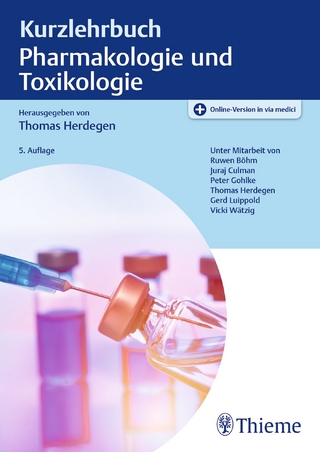
Toxicology of Insecticides
Springer-Verlag New York Inc.
978-1-4613-4412-4 (ISBN)
1 Introduction.- 1.1. Toxicolog.- 1.2. General Patterns of Pesticide Us.- 1.3. Economic and Legal Aspects of Pesticide Us.- 1.4. Reference.- 2 General Principles of Insecticide Toxicology.- 2.1. Evaluation of Toxicity.- 2.2. Analytical Methods for Insecticides.- 2.3. References.- 3 Classification of Insecticides.- 3.1. History and General Groupings of Insecticidal Compounds.- 3.2. Chlorinated Hydrocarbon Insecticides.- 3.3. Organophosphorus Insecticide.- 3.4. Carbamate Insecticides.- 3.5. Thiocyanate Insecticides.- 3.6. Dinitrophenols.- 3.7. Fluoroacetate Derivatives.- 3.8. Acaricidal Chemicals: Sulfonates, Sulfones, Sulfides, and Nitrogen-Containing Compounds.- 3.9. Fumigants.- 3.10. Inorganic Insecticides.- 3.11. Botanical Insecticides.- 3.12. Synergists.- 3.13. References.- 4 Modes of Action of Insecticides.- 4.1. Introduction.- 4.2. Classification of Insecticides by Their Actions.- 4.3. The Nervous System.- 4.4. Chlorinated Hydrocarbon Insecticides.- 4.5. Naturally Occurring Botanical Insecticides.- 4.6. Organofluorine Compounds: Fluoroacetate and Its Analogues.- 4.7. Anticholinesterases: Organophosphorus and Carbamate Insec ticides.- 4.8. Inhibitors of Respiratory Enzymes.- 4.9. Inhibitors of Mixed-Function Oxidases.- 4.10. Chlordimeform and Its Analogues.- 4.11. References.- 5 Metabolism of Insecticides by Animals and Plants.- 5.1. General Types of Metabolic Activities.- 5.2. Primary Metabolic Processes.- 5.3. Conjugation Systems: Secondary Metabolic Processes.- 5.4. Metabolic Reactions Characteristic of Each Group of Insecti- cidal Chemicals.- 5.5. References.- 6 Entry of Insecticides into Animal Systems.- 6.1. Penetration of Insecticides Through the Insect Cuticle.- 6.2. Routes of Insecticide Entry into Insects.- 6.3. Routes of Insecticide Entry into Higher Animals.- 6.4. References.- 7 Dynamics of Insecticide Movement in the Animal Body.- 7.1. Total Intake-Elimination Dynamics.- 7.2. Transport of Insecticides by Blood and Body Fluid.- 7.3. Distribution and Redistribution Within the Animal Body.- 7.4. Factors Affecting Storage and Release.- 7.5. Penetration and Distribution into Vital Organs and Tissues.- 7.6. Elimination of Insecticides: Excretion and Secretion.- 7.7. References.- 8 Movement of Insecticides in the Environment.- 8.1. Introduction.- 8.2. Residues of Insecticides.- 8.3. Movement of Residues in the Environment.- 8.4. References.- 9 Environmental Alteration of Insecticide Residues.- 9.1. Characteristics of Environmental Alteration.- 9.2. Characteristics of Microbial Metabolism.- 9.3. Metabolism of Chlorinated Hydrocarbon Insecticides by Microorganisms.- 9.4. Metabolism of Organophosphate and Carbamate Insecticides by Microorganisms.- 9.5. Metabolism of Acaricidal Compounds by Microorganisms.- 9.6. Degradation by Sunlight and Other Physical Factors.- 9.7. References.- 10 Effects of Pesticides on Wildlife.- 10.1. General Survey of Residue Levels in Various Ecosystems.- 10.2. Hazards to Wildlife.- 10.3. Biological Transfer and Bioaccumulation.- 10.4. References.- 11 Hazards to Man and Domestic Animals.- 11.1. Introduction.- 11.2. Acute Poisoning by Insecticidal Chemicals.- 11.3. Chronic Toxicity and Studies on Subtle Effects.- 11.4. Insecticide Residues in Man.- 11.5. References.- Author Index.
| Zusatzinfo | XVIII, 504 p. |
|---|---|
| Verlagsort | New York, NY |
| Sprache | englisch |
| Maße | 152 x 229 mm |
| Themenwelt | Medizin / Pharmazie ► Medizinische Fachgebiete ► Pharmakologie / Pharmakotherapie |
| Medizin / Pharmazie ► Pharmazie | |
| Studium ► 2. Studienabschnitt (Klinik) ► Pharmakologie / Toxikologie | |
| Veterinärmedizin | |
| ISBN-10 | 1-4613-4412-3 / 1461344123 |
| ISBN-13 | 978-1-4613-4412-4 / 9781461344124 |
| Zustand | Neuware |
| Haben Sie eine Frage zum Produkt? |
aus dem Bereich


